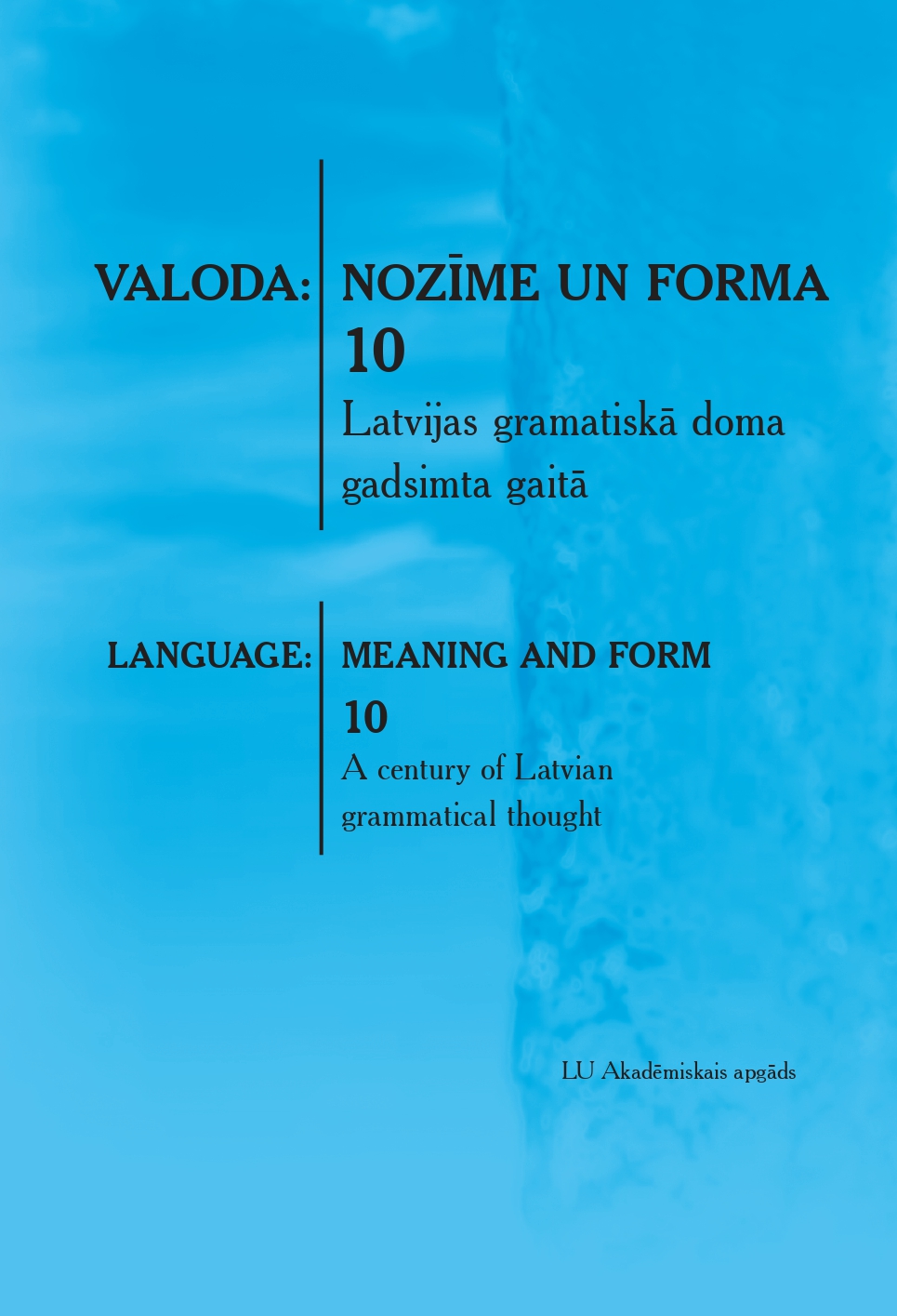Aspektualitāte un kustības izteikšana latviešu valodā
Aspectuality and motion expressions in Latvian
Author(s): Dens DimiņšSubject(s): Morphology, Pragmatics, Baltic Languages
Published by: Latvijas Universitātes Akadēmiskais apgāds
Keywords: grammatical aspect; aktionsart; motion events; manner of motion; directed motion;
Summary/Abstract: Motion events in Latvian are mostly expressed by motion verbs that are mainly intransitive (unaccusative and unergative) and cover various situations involving directed motion (change in position and in time) or undirected, cyclic motion. In Latvian, motion events are also expressed by the infinitive, nouns and participles. The grammatical aspect of the verb, traditionally expressed as accomplished or non-accomplished (±perfective) is formally determined on the basis of the verb form alone (±prefixed) but the interpretation or conceptualization of the content expressed by the verb also depends on the lexical aspect i.e. the semantics of the verb, defined by three binary semantic features (Croft 2012, 33) stative vs. dynamic (process), durative vs. punctual, and bounded vs. unbounded (or telic vs. atelic). Some role is also played by the semantics of the prefix (if applicable), the tense and voice of the verb, as well as the context and the speaker’s intent (pragmatic and contextual factors). Motion verbs are usually classified (Zubizarreta, Oh 2007; Croft 2012) as manner of motion verbs (dance, wobble, run, swim) and path or directed motion verbs (go, drive, come). There are other types of classification available. In Latvian, manner of motion verbs can also express directed motion (iestreipuļot bārā ‘wobble into a bar’, aizskriet līdz stacijai ‘to run up to/as far as the station’), often the distinction between the manner of motion verbs and the directed motion verbs in Latvian is vague, and the same can be said about the aspectuality in the case of prefixed and/or reflexive verbs.
Journal: Valoda: nozīme un forma
- Issue Year: 2019
- Issue No: 10
- Page Range: 36-52
- Page Count: 17
- Language: Latvian

